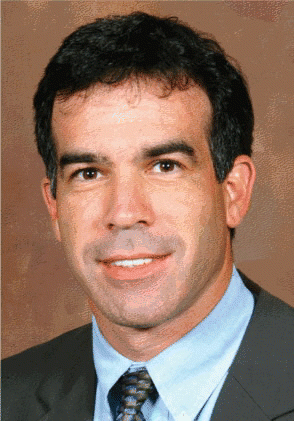Dr. Terris said that changes in imaging technology-particularly, advances in ultrasound visualization-in the mid-1990s have allowed us to use a targeted approach to parathyroid surgery, and this gives us the confidence of having performed a complete resection.
Explore This Issue
February 2009In the surgery procedure itself, he illustrated how the use of blunt elevators allows doctors to perform an atraumatic dissection in the region where the site of the adenoma is anticipated. We are really looking for a color change associated with an adenoma, he said. It’s kind of a purplish hue. Once the adenoma is identified, then it is a matter of gently dissecting around the gland. The gland really wants to come out. You just have to help it a little bit.
 We are witnessing a very rapid change in how thyroid surgery is done. Many of these advances have been technologically driven. Whether it is in new devices or in image guidance, the operation of thyroidectomy has been effectively transformed.
We are witnessing a very rapid change in how thyroid surgery is done. Many of these advances have been technologically driven. Whether it is in new devices or in image guidance, the operation of thyroidectomy has been effectively transformed.
-David J. Terris, MD
In the case he described, the large adenoma made it necessary for the surgeon to deal with the major nerve in the area. To make sure that nerve is not injured, we identify it, trace it out, and dissect it away from the adenoma, so we can retract the adenoma laterally in this case, Dr. Terris explained. It is a process of gentle blunt dissection to mobilize that nerve away from the adenoma.
We usually find the end artery of the adenoma. We could use the harmonic device, but we usually find that there is just one blood vessel that we are ligating for this entire operation, so I think it is hard to justify a $300 handpiece just for that. So we use an endoscopic clip. We fire three clips-two on the patient side and one on the adenoma side-and we divide the artery between these clips. Once that is done, the adenoma is devascularized.
The surgery can be performed in such a manner that the patients recover rapidly, and almost all of them are discharged the day of the operation. I think we are enjoying the benefits of technology in that there is a high rate of cure even in less-experienced hands, Dr. Terris said. In the old days, it was more important to have an experienced parathyroid surgeon. Now I think that even in less experienced hands, we are finding quite good results.
Leave a Reply